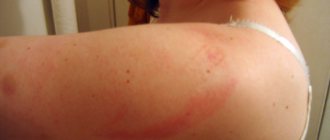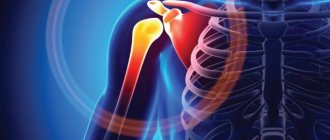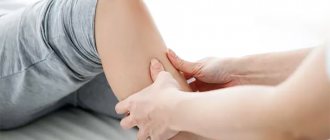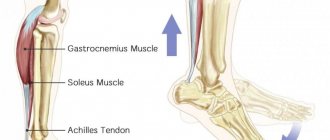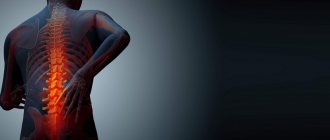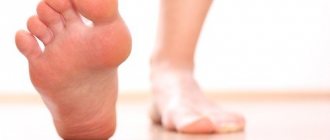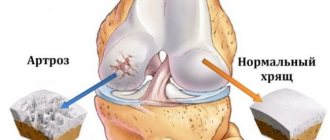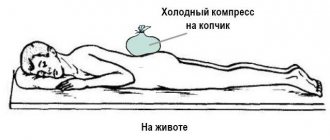- Periostitis
A shin bruise is a closed tissue injury without significant disruption of their structure. Most often it occurs due to sports injuries, falls or blows with a blunt object.
Shin bruises often occur as a result of sports injuries.
In most cases, tissues that are located superficially are affected: skin, subcutaneous tissue, blood vessels, periosteum and muscles. With a strong impact, soft tissues that are pressed against the bone are especially damaged.
If you bruise the lower leg in the area of its anterior internal surface (in the place where the subcutaneous tissue and skin are adjacent to the bone), necrosis of the skin may occur, which leads to its subsequent rejection.
Often, at the site of application of traumatic force, especially when the skin is detached, shallow wounds and abrasions occur, which are the entrance gates for infectious agents. In such cases, the injury is complicated by inflammation, which requires additional treatment.
Anatomical structure of the lower leg
The lower leg is the part of the lower limb from the knee to the heel. It consists of the tibia and fibula bones, to which the patella is attached. The tibia and fibula articulate at the top, at the bottom they end with two processes (the outer and inner malleolus), and they are connected along their entire length by a membrane.
The severity of injury symptoms depends on where it is located on the lower leg.
The soleus muscle is adjacent to the tibia and fibula. The gastrocnemius muscle has two heads, one of them is attached to the lateral and the second to the medial side of the femur. In contact, both heads overlap the soleus muscle and pass into the Achilles tendon, which is attached to the calcaneus.
Muscles are attached to the back and front of the leg bones, which are divided into three groups:
| Group | Description |
| Front | Extend the foot and toes |
| External | Bend the foot, and also abduct and rotate it outward |
| Rear (calf) | Flex the foot and toes |
First aid
When providing first aid to a victim, if there is even the slightest suspicion of a more severe injury (in the form of a fracture, dislocation, combined injury, for example with an injury to internal organs or a bruised elbow or hand), you should consult a doctor as soon as possible. The amount of assistance required should correspond to the severity and extent of the suspected injury.
If the integrity of the skin is damaged, a sterile bandage is applied. In case of joint bruises, multiple bruises, or skin detachment, transport immobilization is carried out to the nearest medical facility.
For minor bruises, local application of cold helps reduce pain: immediately after the injury, you can direct a stream of cold water to the damaged area, apply a heating pad or an ice pack, or a cold lotion to it.
Achilles tendon injuries.
The Achilles tendon is located at the back of the lower leg. In case of injuries to this part of the leg, a characteristic sign will be a crunching sound. The resulting injury of this kind makes it impossible to raise the heel and rise onto the toe; the lower part of the leg swells within an hour. A cold compress can relieve pain and slow down swelling. It is necessary to extend the toe of the foot, bend the leg slightly at the knee and secure the limb in this position so that both joints are motionless. It is good to bandage a solid bar, for example, a school ruler or part of a thin board, to the shin and the outer part of the foot. It is strictly not recommended to step on the injured leg, and if a rupture occurs, the patient should be taken to the hospital.
If there are open wounds on the lower leg, first aid is provided in the following order:
1. Clean the surrounding skin of dirt and, if possible, disinfect it.
2. Stop the bleeding with a homemade tourniquet or pressure bandage.
3. Apply clean gauze or a piece of cloth that you have on hand.
It is necessary to deliver a person to a medical facility quickly so that the hospital removes the tourniquet, which blocks access to the blood flow.
Symptoms and diagnosis
The following symptoms are typical for a shin bruise:
- hematoma and swelling at the site of injury : severe bruising of the lower leg with swelling is most typical for sports injuries, often pronounced signs are visible after some time;
- pain syndrome at the injury site.
Before starting treatment, you need to make sure that the bones are intact and there are no other serious damages. To do this, you need to see a doctor and undergo an appropriate examination, in particular, an x-ray of the bruised area.
It is especially important to get tested for older women who often have osteoporosis. With this disease, fractures can occur even with minor injuries.
Treating a shin bruise at home
A pressure bandage must be applied to the site of the injury. The leg needs to be rested and elevated. For several days you should follow a gentle exercise regime. It is expanded gradually as swelling and pain decrease.
The injured leg needs to be rested and placed in an elevated position.
A few days after the injury, you can begin active movements with increasing amplitude in the joints that are located near the site of injury. To resolve a hematoma (bruise), you can use warm compresses and thermal procedures (warm baths, a heating pad with warm water, etc.).
For extensive bruises, therapy should be carried out strictly as prescribed by a doctor and under his supervision.
Drug therapy
In order to quickly cure a bruise, local medications are used. They have different mechanisms of action: they reduce the area of the hematoma and pain and speed up recovery. They are often used in combination with other local and systemic pain medications.
For treatment, external agents are most often prescribed, in particular Dolobene
The main contraindication to their use is individual intolerance to the components; the most common side effect is allergic reactions.
Medicines used for hematomas and bruises:
- Traumeel S : complex homeopathic ointment. It has anti-inflammatory, decongestant, analgesic, absorbable, immunostimulating and wound-healing effects. In addition to bruises, the product helps to cure postoperative swelling of soft tissues, dislocations, sprains, and is used in the complex treatment of diseases such as osteochondrosis, osteoarthritis, tenosynovitis;
- Dolobene : combined external preparation (in the form of a gel). Dimethyl sulfoxide has anti-inflammatory, decongestant and local analgesic effects; heparin promotes the restoration of connective tissue and has an anti-inflammatory effect; dexpanthenol accelerates healing;
- Badyaga : herbal preparation in powder form for the preparation of a suspension. It is classified as a local irritant; its mechanism of action is based on mechanical irritation of the skin, which increases blood flow to the cells and restores their nutrition and respiration.
Before using any product, you should carefully read the instructions. If, despite therapy, the injury site continues to swell, you should immediately seek medical help.
When a bruise hurts so badly that it is difficult to treat with over-the-counter medications, medications are indicated, for which you need to get a prescription from a doctor.
Traditional methods
You can reduce the severity of discomfort or get rid of a lump on the shin after a bruise using unconventional means.
The most effective recipes:
- Chop 5 small or 2 large onions. Add 1 tbsp to it. l. rock salt. Wrap the resulting mixture in a piece of cotton cloth. Apply a compress to the affected area. It must be changed three times a day. The course of treatment is 5 days.
- Take 0.5 tsp. apple cider vinegar (warmed), 2 tsp. salt. Mix the components thoroughly, add 4 drops of iodine. Moisten a piece of cotton cloth in the resulting liquid. Apply to the shin at the site of the bruise.
- Take some freshly picked plantain and yarrow leaves. Grind and mix the raw materials. Apply the resulting paste to the affected area.
It is not recommended to apply alcohol compresses to the hematoma. Despite their effectiveness, their use often leads to severe burns.
Possible complications
The easiest and most common complication of a bruise is a lump. Usually it appears after a hematoma in places where there is almost no fatty tissue under the skin.
How severe this disorder is and how long it lasts depends on many factors, including the severity and nature of the blow. If the lump persists for more than a week, you should consult your doctor, as this may indicate calcification of the hematoma.
Periostitis
Bruising of the periosteum can lead to a more serious complication - periostitis. This is an inflammation of the periosteum, which usually begins in its outer or inner layer and then spreads to the remaining layers. The inflammatory process can easily move from one tissue to another, since there is a close relationship between the bone and the periosteum.
A common complication of lower leg injury is periostitis.
The pathology according to its clinical course is divided into acute (subacute) and chronic forms. Most often, the periosteum is affected in an area of bone that is poorly protected by soft tissue, in particular on the anterior surface of the tibia.
Simple periostitis is characterized by an acute aseptic inflammatory process with hyperemia, slight thickening and infiltration of the periosteum. Accompanied by swelling and pain in a limited area. The inflammation usually subsides quickly, but sometimes fibrous growths or deposits of calcium salts are possible.
Gel "Badyaga 911"
This product should be in every first aid kit. Its composition is represented by natural components that promote tissue regeneration, reducing the severity of edema and hematoma. In addition, the active ingredients improve blood circulation in the affected area, thereby significantly reducing the risk of post-traumatic thrombophlebitis.
Apply the gel only to clean skin. The product must be spread over it in a thick layer. Without rubbing, leave the gel on the skin for 20 minutes. After the specified time, the product should be washed off with warm water. A burning sensation may be felt during use.
Forecast
In most cases, the prognosis is favorable. Typically, complete recovery from a minor injury occurs within 2–3 weeks. In more severe cases, the recovery period is longer and sometimes lasts several months.
If the injury occurred during sports, then you can return to them only after the mobility of the limb has been completely restored.
It is important to remember that if the symptoms of a shin bruise, despite treatment, do not subside or intensify, you should consult a doctor, which will help avoid the development of serious consequences.
Features of traditional treatment
Only mild bruises that are not accompanied by severe clinical manifestations do not require medical intervention. In other cases, it is recommended to consult a traumatologist.
The treatment regimen for a shin bruise consists of the following points:
- Ensuring limb rest. The patient needs to reduce physical activity to a minimum; it is advisable to rely on a cane while walking. In case of severe bruises, a splint is immediately applied.
- Reception and local use of drugs belonging to the group of NSAIDs. The active components of the drugs relieve pain and inflammation. As a rule, doctors prescribe the following drugs: Nise, Celebrex, Movalis, Arcoxia.
- Thermal procedures. Prescribed 3 days after injury. During treatment with dry heat, the hematoma resolves faster and the healing process is accelerated.
- Physiotherapy. Gymnastics should also be done from the 3rd day after injury. At the initial stage, all exercises are gentle; gradually the intensity of the load needs to be increased.
- Physiotherapy. During the procedures, swelling is eliminated and the hematoma is resolved. As a rule, doctors recommend taking a course of laser and magnetic therapy, electrophoresis and UHF.
- Massotherapy. Prescribed 7 days after injury. Massage is necessary if the swelling and hematoma do not resolve on their own.
The duration of treatment is no more than 3 weeks. During this period, the damaged area is completely restored. If the hematoma persists and there is pain, it is customary to talk about the development of complications.
